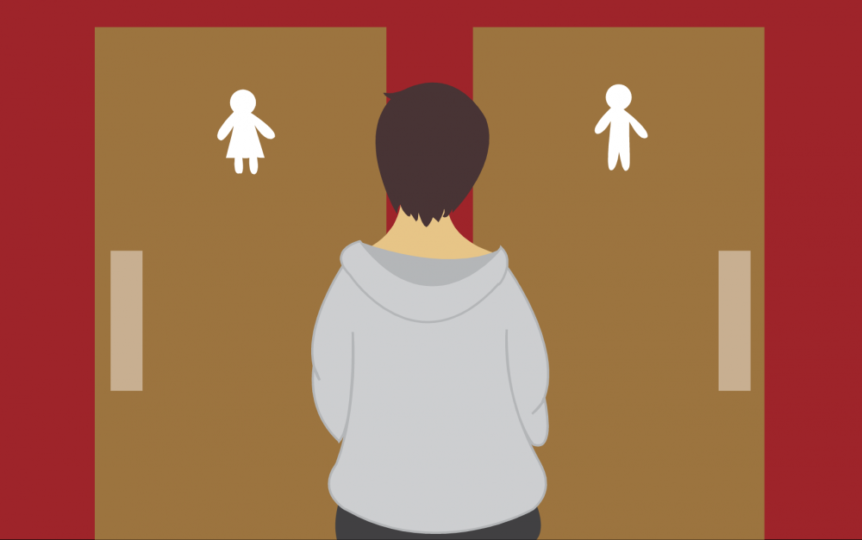Even before a child is born, they are already categorized into what it means to be stereotypically male or female. From painting nurseries blue for boys and pink for girls to hosting a gender reveal parties associated with their gender’s “color,” distinguishing masculine from feminine is something we subconsciously do throughout all of our lives.
We feel the need to decide what a boy or girl can and cannot do because of the genitals they were born with. Many parents refuse to let their son dress up in pink frilly princess dresses because it is “girly” or “gay.” Likewise, many parents refuse to let their daughters “play fight” like the boys because it is not “ladylike.”
The youth in society are raised with the notion that if we act a certain way, then we are betraying the definition of our gender assigned at birth. So out of fear of being judged, we tend to follow the social norms attached to our respective genders. For people who are questioning their gender, this makes it especially difficult to figure out where they stand. The gender binary, the classification of two genders in two distinct and opposite forms, forces a questioning individual to choose.
It is more than likely that you have heard the phrase “there are only two genders” or even uttered it yourself, at least once in your life. Whether it was said for cultural, religious, or personal reasons, this phrase tends to be the common belief among society. Many were raised this way, but what if you were told that the gender binary isn’t actually real? Of course, it is understandable to have difficulty digesting that idea.
In reality, gender is on a spectrum. The only reason we continue to uphold the gender stereotypes through generations is that this is what we were taught, and therefore this is all we have ever known. But if you really stop for a moment and think about it, who decided that blue was for boys and that pink was for girls? On a larger scale, who decided that those born with male genitals need to identify as men and that those born with female genitals need to identify as women? The sad reality is that we, without meaning to, have all decided upon this. We have propped ourselves into these confining boxes of gender, restricting those who may want to transition, or may identify as gender nonbinary from truly expressing themselves.
Because many refuse to acknowledge that gender is a spectrum– a system of classification that we have cultivated over time– those who are unsure of their gender are shunned by society. Pronouns such as “they/them/theirs” are ridiculed by the average cis straight man. Even in the LGBTQ+ community itself, a lot of phobia against gender non-conforming people exists because of it. Because of the gender binary concept, plenty reject the idea that people may exist beyond this gender binary. Yet no matter how much one tries to reject it, nonbinary people are not an “idea”; they are real.
The next time you meet someone who is nonbinary or transgender, remember that their pronouns are just as valid as yours. In a society that shames those who are “different,” a little decency and respect can make all the difference in someone’s life. Just as you wouldn’t like to be misgendered by your peers, they would not like to be misgendered either, especially on purpose. Change can be a hard pill to swallow, but it is necessary to accept that as time passes, more and more people are starting to see gender as a spectrum. Be part of that change.
What does gender binary mean and why is it toxic?
December 6, 2019
0
More to Discover








